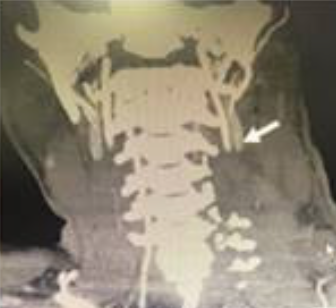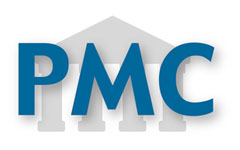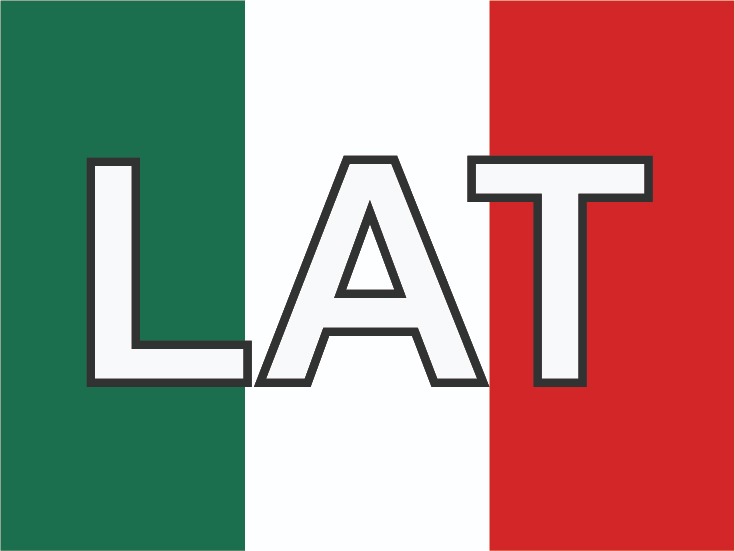Damage Control in Orthopedics and Traumatology
Abstract
In Orthopedics, damage control is indicated in patients with pelvic and / or long bone fractures associated with unstable general conditions. Given the severity of the trauma associated with hemodynamic instability, it is not appropriate to perform a complex definitive reduction and fixation surgery for all the patient’s fractures. In these cases, its recommended to perform minimally invasive procedures which provide provisional stabilization of the fractures, this reduces pain, controls bleeding from fractures, allows for proper alignment of fractured bones and reduces dislocations, these procedures aim to control the damage of the first hit to reduce complications. Closed or open fractures of the long bones of the femur, tibia, humerus, and pelvis can lead to instability and shock making damage control in orthopedics a priority. If the patient is hemodynamically stable its recommended to stabilize all fractures with an early permanent internal fixation thereby controlling the damage with less hospitalization time. As a result, there’s a reduction in the time spent in intensive care as well as the need for mechanical ventilation, transfusions and complications. The concept of damage control as the treatment in orthopedic injuries should be individualized according to the general conditions of each patient and the severity of injuries such as open fractures, dislocations, complete dislocation of sacroiliac joint, vascular lesions, amongst others, as these lesions must be a priority in most patients with multiple injuries. This is to avoid complication and that can leave permanent sequalae’s by receiving inadequate initial treatment.
Authors
Downloads
Keywords
- Damage control
- Orthopedics
- Definitive early fixation
- External Fixators
- Fractures, Open
- Traumatology
- Fracture Fixation
- Multiple Trauma
References
Vallier HA, Super DM, Moore TA, Wilber JH. Do patients with multiple system injury benefit from early fixation of unstable axial fractures? the effects of timing of surgery on initial hospital course. J Orthop Trauma 2013; 27: 405–12. https://doi.org/10.1097/BOT.0b013e3182820eba.
Nahm NJ, Vallier HA. Timing of definitive treatment of femoral shaft fractures in patients with multiple injuries: A systematic review of randomized and nonrandomized trials. J Trauma Acute Care Surg 2012; 73: 1046–63. https://doi.org/10.1097/TA.0b013e3182701ded.
D'Alleyrand JCG, O'Toole R V. The evolution of damage control orthopedics. Current evidence and practical applications of early appropriate care. Orthop Clin North Am 2013; 44: 499–507. https://doi.org/10.1016/j.ocl.2013.06.004.
Vallier HA, Wang X, Moore TA, Wilber JH, As JJ. Timing of orthopedic surgery in multiple trauma patients: Development of a protocol for early appropriate care. J Orthop Trauma 2013; 27: 543–51. https://doi.org/10.1097/BOT.0b013e31829efda1.
Roberts C, Pape CH, Jones A, Malkani A, Rodriguez J, Giannoudis P. Damage control orthopedics Evolving concepts in the treatment of patients who have sustained orthopedic trauma. J Bone Jt Surg 2005; 87-A: 434–49. https://doi.org/10.1016/j.mpsur.2015.03.003.
Baker S, O'Neill B. The injury serverity score: An update. J Trauma 1976; 16.
Wong TH, Krishnaswamy G, Nadkarni NV, Nguyen H V., Lim GH, Bautista DCT, et al. Combining the new injury severity score with an anatomical polytrauma injury variable predicts mortality better than the new injury severity score and the injury severity score: A retrospective cohort study. Scand J Trauma Resusc Emerg Med 2016; 24: 1–11. https://doi.org/10.1186/s13049-016-0215-6.
Deng Q, Tang B, Xue C, Liu Y, Liu X, Lv Y, et al. Comparison of the ability to predict mortality between the injury severity score and the new injury severity score: A meta-analysis. Int J Environ Res Public Health 2016; 13: 1–12. https://doi.org/10.3390/ijerph13080825.
Waydhas C, Nast-Kolb D, Trupka A, Settl R. Posstraumatic inflammatory response, secondary operations, and late multiple organ failure. J Trauma 1996; 40: 624–31.
Martinez R. A, Uribe JP, Escobar SS, Henao J, Rios JA, Martinez-Cano JP. Damage control and definitive early stabilization in the treatment of the multiple trauma patient 2018; 32: 152–60.
World Health Organization. The global Burden of diseases: 2019 Update. Geneva: 2020.
Nicola R. Early Total Care versus Damage Control: Current Concepts in the Orthopedic Care of Polytrauma Patients. ISRN Orthop 2013; 2013: 1–9. https://doi.org/10.1155/2013/329452.
Peden R, McGee K, Krug E, Peden MM, World Health Organization. Injuries and Violence Prevention Department. Injury: a Leading Cause of the Global Burden of Disease 2000. World Health Organization; 2002.
Pape HC, Lefering R, Butcher N, Peitzman A, Leenen L, Marzi I, et al. The definition of polytrauma revisited: An international consensus process and proposal of the new "Berlin definition." J Trauma Acute Care Surg 2014; 77: 780–6. https://doi.org/10.1097/TA.0000000000000453.
Giannoudis P V., Hildebrand F, Pape HC. Inflammatory serum markers in patients with multiple trauma. Can they predict outcome? J Bone Jt Surg - Ser B 2004; 86: 313–23. https://doi.org/10.1302/0301-620X.86B3.15035.
Schell H, Duda GN, Peters A, Tsitsilonis S, Johnson KA, Schmidt-Bleek K. The haematoma and its role in bone healing. J Exp Orthop 2017; 4. https://doi.org/10.1186/s40634-017-0079-3.
Horst K, Eschbach D, Pfeifer R, Hübenthal S, Sassen M, Steinfeldt T, et al. Local Inflammation in Fracture Hematoma: Results from a Combined Trauma Model in Pigs. Mediators Inflamm 2015; 2015. https://doi.org/10.1155/2015/126060.
Giannoudis P V., Smith RM, Bellamy MC, Morrison JF, Dickson RA, Guillou PJ. Stimulation of the inflammatory system by reamed and unreamed nailing of femoral fractures. An analysis of the second hit. J Bone Jt Surg - Ser B 1999; 81: 356–61. https://doi.org/10.1302/0301-620X.81B2.8988.
Marsell R, Einhorn TA. The biology of fracture healing. Injury 2011; 42: 551–5. https://doi.org/10.1016/j.injury.2011.03.031.
Greenspan L, McLellan BA, Greig H. Abbreviated Injury Scale and Injury Severity Score: a scoring chart. J Trauma 1985; 25: 60–4. https://doi.org/10.1097/00005373-198501000-00010.
Copeland C, Mitchell K, Brumback R, Gens D, Burgess A. Mortality in patients with bilateral femoral fractures. J Orthop Res 1998; 12: 315–9.
Pape HC, Rixen D, Morley J, Husebye EE, Mueller M, Dumont C, et al. Impact of the method of initial stabilization for femoral shaft fractures in patients with multiple injuries at risk for complications (borderline patients). Ann Surg 2007; 246: 491–9. https://doi.org/10.1097/SLA.0b013e3181485750.
Nowotarski PJ, Turen CH, Brumback RJ, Scarboro JM. Conversion of external fixation to intramedullary nailing for fractures of the shaft of the femur in multiply injured patients. J Bone Joint Surg Am 2000; 82: 781–8.
Smith WR. Prediction of Pulmonary Morbidity and Mortality in Patients With Femur Fracture 2010; 69: 1527–36. https://doi.org/10.1097/TA.0b013e3181f8fa3b.
Martinez RA Damage control in orthopedics and traumatology. Rev Colomb Ortop Traumatol 2006: 55–64.
Scalea TM, Boswell SA, Scott JD, Mitchell KA, Kramer ME, Pollak AN. External fixation as a bridge to intramedullary nailing for patients with multiple injuries and with femur fractures: Damage control orthopedics. J Orthop Trauma 2004; 18. https://doi.org/10.1097/00005131-200409001-00002.
Giannoudis P V. Surgical priorities in damage control in polytrauma. J Bone Jt Surg - Ser B 2003; 85: 478–83. https://doi.org/10.1302/0301-620X.85B4.14217.
Kostenuik P, Mirza FM. Fracture healing physiology and the quest for therapies for delayed healing and nonunion. J Orthop Res 2017; 35: 213–23. https://doi.org/10.1002/jor.23460.
Gandhi RR, Overton TL, Haut ER, Lau B, Vallier HA, Rohs T, et al. Optimal timing of femur fracture stabilization in polytrauma patients: A practice management guideline from the Eastern Association for the Surgery of Trauma. J Acute Care Surg 2014; 77: 787–95.

Copyright (c) 2021 Universidad del Valle

This work is licensed under a Creative Commons Attribution-NonCommercial 4.0 International License.
The copy rights of the articles published in Colombia Médica belong to the Universidad del Valle. The contents of the articles that appear in the Journal are exclusively the responsibility of the authors and do not necessarily reflect the opinions of the Editorial Committee of the Journal. It is allowed to reproduce the material published in Colombia Médica without prior authorization for non-commercial use

 https://orcid.org/0000-0003-4902-5703
https://orcid.org/0000-0003-4902-5703


















